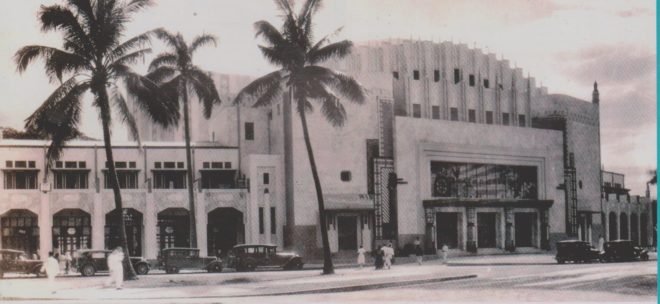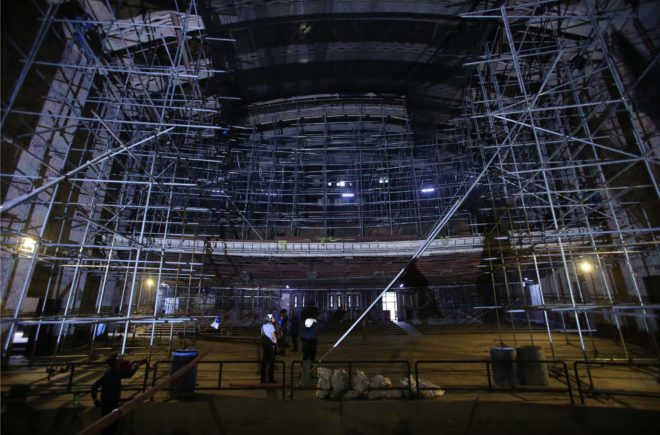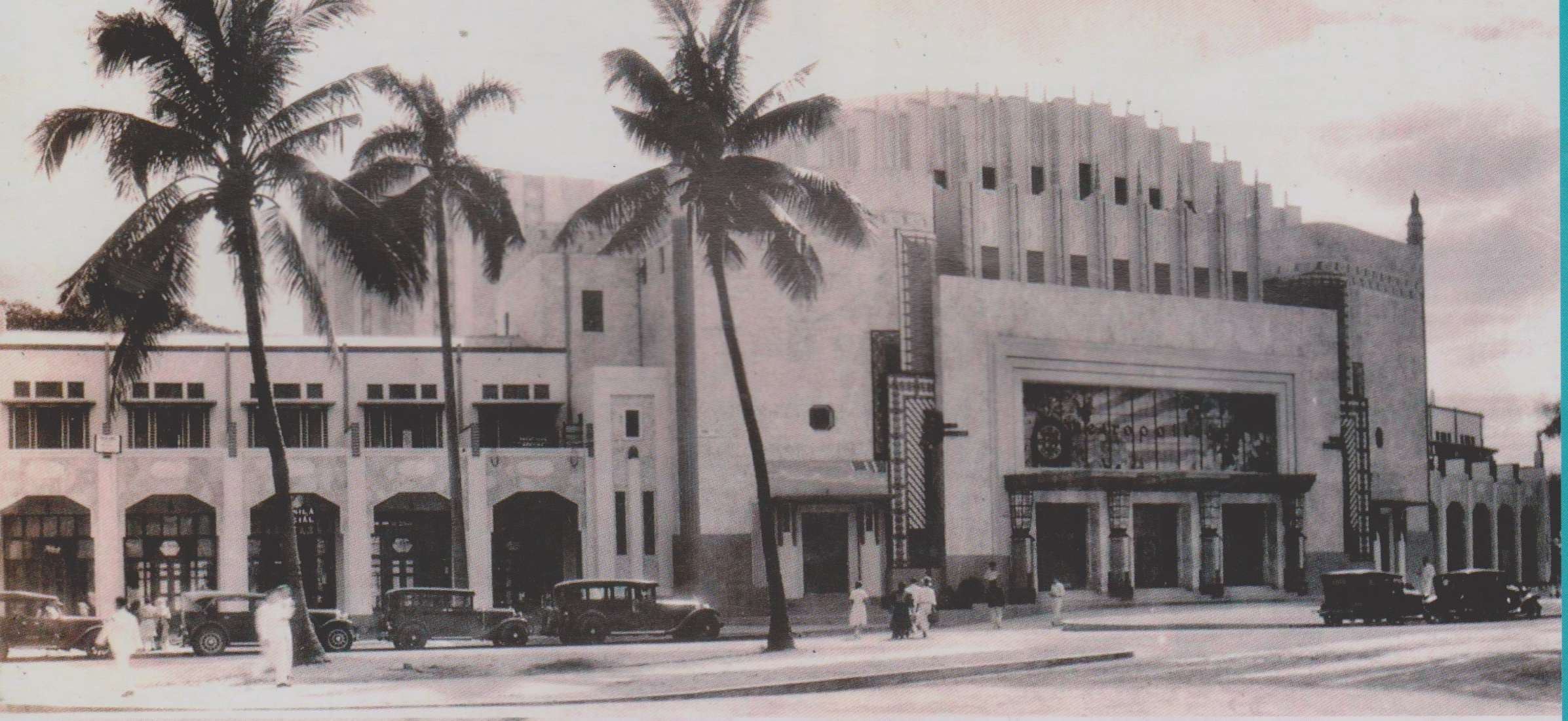
It was the citadel of culture during the belle époque, the prewar years in Manila: the Manila Metropolitan Theater, designed by architect Juan Arellano (later National Artist) in the then new Art Deco style.
It opened on Dec. 10, 1931, an elegant auditorium bracketed by pavilions, open courtyards, flagstone paths, green lawns and flowers, ballroom, offices, shops and a restaurant.
The inauguration program included Ernesto Vallejo playing Albeniz’s “Tango,” Monserrat Iglesias singing arias from Saint-Saëns’ “Samson and Delilah,” and the Manila Music Academy under Alexander Lippay playing the Coronation March from Meyerbeer’s “The Prophet.”
“Through the next decade,” said an unsigned history of the Manila Met by the National Commission for Culture the Arts (NCCA), “it seemed all the great artists of the world traveling through the Far East were booked to appear at the Met, which featured seasons of opera, ballet, orchestral music, theater and film.”
Filipino works
The days of wine and roses ended in 1941, with World War II in the Pacific. And yet, during the Japanese Occupation, the Met continued operations, with the emphasis this time on Filipino works. The New Philippines Symphony was formed, with Eulogio Rodriguez as president and Lucrecia Kasilag (another future National Artist) as secretary.
Compositions performed included those by Francisco Santiago, Lucio D. San Pedro, Juan Hernandez and Felipe Padilla de Leon.
With the return of the Americans in 1945, the southern districts of Manila went up in flames, and among those buildings bombed out and reduced to ruins was the Manila Met.
During the postwar years, the Met went into decline, became a boxing arena and home of informal settlers, but reborn in 1978 through the efforts of First Lady Imelda Marcos. There were many musical plays presented during the Marcosian martial law years.
“Ironically, though,” the NCCA history notes, “it was also the former First Lady who led the Met into the long dispute of debt and ownership that left it abandoned for years.”

Old glory
Now comes another serious attempt to restore the iconic complex to its old glory. Work began last year and continues this year, highlighted by a recent guided tour for the media by architect Gerald Lico, head of the Restoration and Conservation Project.
Also present was Met consultant for theater Joey Nombres, a stage director, who observed that “it is more expensive, more difficult to restore (as against renovation).”
He added, “You are also conserving, and it’s more detailed. You have to consult every now and then with the National Historical Commission of the Philippines every time you come across something odd. It’s like that every day.”
The building is not yet a pretty sight. There are poles, beams and scaffolding all over the place, and many off-limits areas. But the lobby is now regaining its luster, with its grand stairway, sculptures by Italian artist Francesco Monti and a copy of an Amorsolo painting.
“They call this one of the biggest Art Deco buildings still existing in the world today,” Nombres said. “That’s why the restoration is slow, it has to be faithful to the original.”
Once air-cooled only by the iconic Insular Ice Plant across but later air-conditioned, the Manila Met will now have modern technology like lighting equipment, energy-saving devices, LED lighting instruments and, for the first time, an elevator.
Much work
The three-level building will have a venue for the national folk artists, members of the Gawad sa Manlilikha ng Bayan (Gamaba), who will conduct regular workshops; and a gallery for permanent exhibits, projection room and archives.
Plays were presented in the old ballroom, now being restored, with its chandeliers, like Noel Coward’s “Private Lives.” “It is not well-known, but besides being a performance venue during the 1930s it was also a cinema house,” said Nombres.
“The budget for the first phase of the restoration is P269 million,” he added, with almost 40-percent restoration work done for the theater proper and 20 percent for the complex. “There is much work to be done. Work started last year and the theater will open in June 2018.”
And then, one hopes, the Manila Met will be restored once more to its old glory. In the recent past, the musical plays presented—like “Giliw Ko,” “Walang Sugat,” “Ang Kiri,” “Sarunbanggi” and even “My Fair Lady” and “Kismet”—rivaled those of the Cultural Center of the Philippines.
Let it be so again, now that theater is undergoing a renaissance in Metro Manila. —CONTRIBUTED











































